
Many would think that competition and races don't play a major role in the art world, with art being an industry more focused on reflection, creativity, and individuality. However, those well-versed in the development of the arts from the Renaissance era to date, know that a little healthy competition has been the lifeblood of some of the greatest masterpieces.
In fact, many renowned artists from past iconic eras started their careers together, engaged in a heated race to the heights of success, neck and neck until one crosses the finish line, contributing to some truly masterful works of art. And what rivalry would be complete without a few snide jabs and shots fired. From beyond legendary artists like Michelangelo to Picasso, these have got to be some of the most epic rivalries to have been spawned in the tight-knit art community.
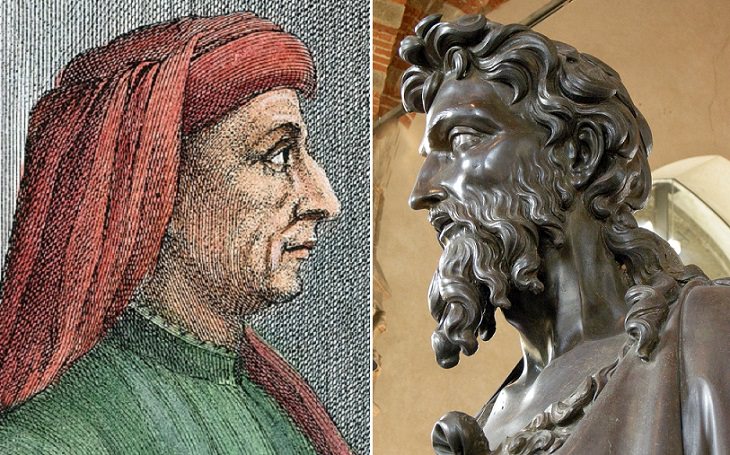
(Left: Filippo Brunelleschi, By Aislesalvotimeingh, Wikimedia Commons / Right: Lorenzo Ghiberti, By Sailko, Wikimedia Commons)
The 1400s saw the rise of the Renaissance age and corresponding artists inspired the ideas of discovery, freedom, and religious stories. It also saw the rise of one of the greatest artistic rivalries ever known, between Lorenzo Ghiberti and Filippo Brunelleschi.
As artists that ran in similar circles, they often found themselves competing for commissions. Their rivalry hit its true finale when both entered a competition alongside numerous other artists to design a set of bronze doors for the Baptistery of Battistero di San Giovanni in Florence. Both artists created panels depicting scenes between Isaac and Abraham.
The judges for the competition were torn between the two artists and eventually determined that it was a tie, insisting the two artists partner up on the project. Today the panels still hang side by side on the bronze doors. Brunelleschi's ego was so damaged, he refused to ever make a sculpture again.
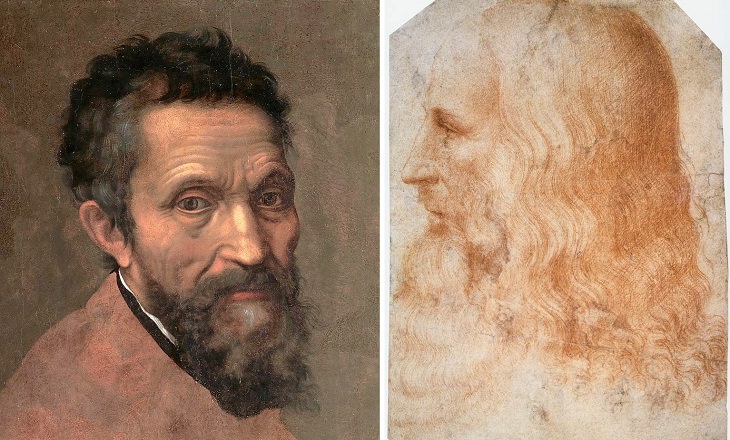
(Left: Michelangelo, By Daniele da Volterra, Wikimedia Commons / Right: Da Vinci, By Francesco Melzi, Wikimedia Commons)
At the time when Michelangelo's career was just beginning to grow and flourish, Leonardo Da Vinci was already an established artist. Despite the fame that Da Vinci received for his painting the Mona Lisa, young Michelangelo was skeptical of the older artist's prowess and reportedly commented on his failure to finish a horse statue in Milan during a chance encounter on the street.
Da Vinci struck Michelangelo with a phallocentric comeback a few years later, about his statue of David. Having similar artistic styles and training, the two eventually found their rivalry put to the ultimate test in 1504, when both men were commissioned to paint the Hall of Five Hundred, in Florence, Italy.
The two worked literally back to back, each painting one side of the wall furiously, depicting a different iconic battle, desperate to outshine the other. For whatever reason, be it the rivalry or eventual disinterest, the project was not finished by these two artists and instead went to other (perhaps less competitive) artists to complete.
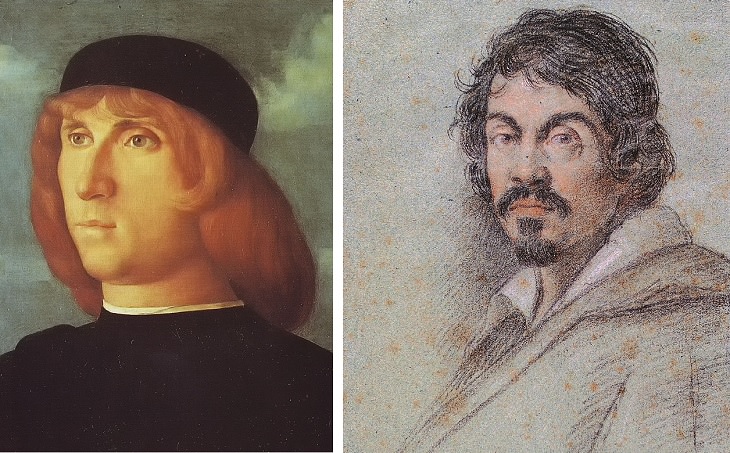
(Left: Giovanni, By Jim.kovic, Wikimedia Commons / Right: Caravaggio, By Ottavio Leoni, Wikimedia Commons)
Michelangelo Merisi da Caravaggio, better known as Caravaggio (probably because Michelangelo was taken) was a 16th-century artist that found himself locked in a clash of egos with another rising star, Venetian painter Giovanni Bellini, referred to as Giovanni.
Their rivalry began when Giovanni created a piece resembling Caravaggio’s painting Amor Vincit Omnia, in a clear attempt to make a mockery of it. Caravaggio responded in kind, creating a new painting, also based on his original mocked piece, that depicted the devil with Giovanni’s head - behavior absolutely becoming of adult professional artists.
The battle finally ended when Caravaggio wrote and published a series of graphically crude comic poems, hitting the Venetian artist with every grade-school insult he could think of. Giovanni simply had Caravaggio jailed for a few days after taking him to court on charges of libel.
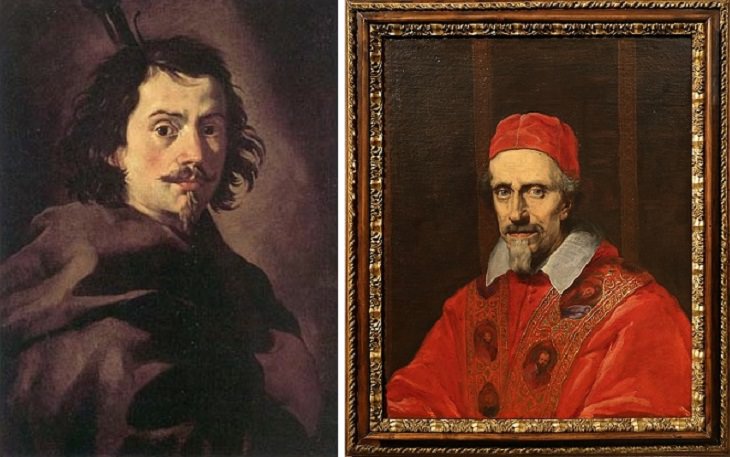
(Left: Francesco Borromini, By Anonymous, Wikimedia Commons / Right: Gianlorenzo Bernini, By Sailko, Wikimedia Commons)
Here are two more creators from the Renaissance era that fought fiercely. These 17th-century artistic geniuses were not only painters and sculptors but also the architects behind the incredible Baroque aesthetic that made Rome the powerhouse of ornate facades and grand structures.
While much of their work has been jointly admired by visitors and fans alike, their rivalry was largely unknown despite the drama surrounding it. Piazza Navona was one centerpiece of this long and drawn out competition, within which creations by the two artists were placed right opposite each other leading to numerous legends. The culmination of the rivalry, which was forged by years of Bernini overshadowing Borromini (as well as a brief stint when the latter had to work under the former) came a little later.
Bernini was commissioned to work on enlarging the Palace of the Propagation of the faith (which was right beside his home). However, the project was finally given to Borromini, and the two spent that brief period beside each other creating various pieces of art to taunt the other (like carving donkey ears on the side of the church facing Bernini's home).
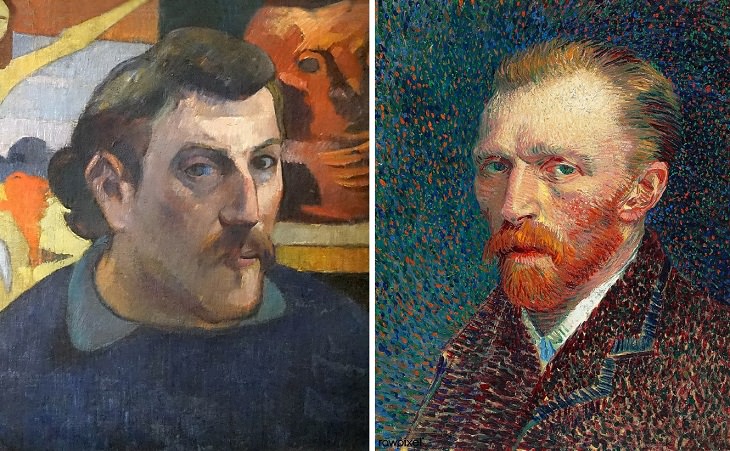
(Left: Paul Gauguin, By Jean-Pierre Dalbéra, Wikimedia Commons / Right: Vincent Van Gogh, By Rawpixel, Wikimedia Commons)
Gauguin and Van Gogh were two formidable artists of the 19th century in their own right, whose works still inspire awe. However, for a brief period (less than three months), the two were engaged in a strange and highly tumultuous relationship that took on many forms. Their relationship began with a mentorship, spurred on by Van Gogh’s idolization of Gauguin.
Van Gogh believed that the older artist would be able to lead the charge on a new artist’s collective in the humble city of Arles. Unfortunately, Gauguin had different ideas, to make a quick buck and return to Martinique - the place that inspired him. According to historians, this left Van Gogh constantly in fear of his departure which some say contributed to his deteriorating mental health (as this occurred shortly before his breakdown).
Though both men respected each other’s work immensely, their personalities clashed severely. As Gauguin would often create paintings depicting Van Gogh or about the same subject matter as Van Gogh’s paintings, the two maintained a competitive undercurrent. Gauguin’s journals indicate that it was mere days after his announcement to leave that Van Gogh’s mental anguish escalated to the point of his cutting off his own ear.
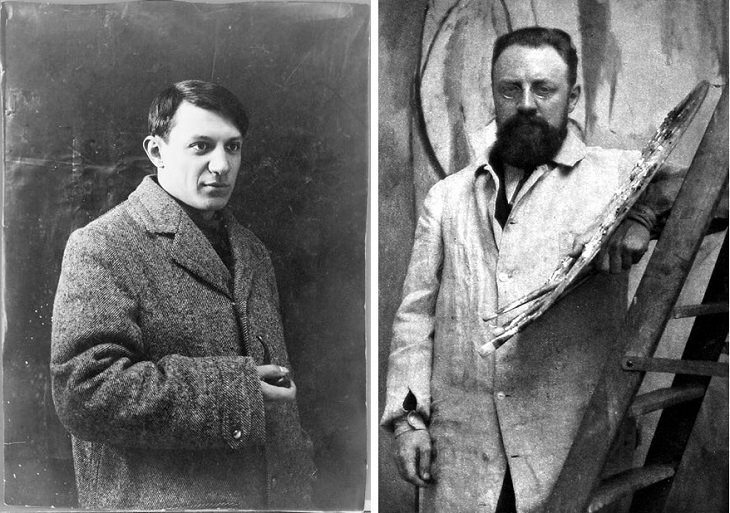
(Left: Pablo Picasso, By Anonymous, Wikimedia Commons / Right: Henri Matisse, By Alvin Langdon Coburn, Wikimedia Commons)
Perhaps two of the most well-known painters that spurred on the growth of modernism and abstract art, the rivalry between Picasso and Matisse shows us what healthy competition can give the art world. What started with a rivalry blossomed into camaraderie in a spark of creativity and magic.
The two were not bitter rivals as much as they were highly competitive friends, with each one constantly trying to show up the other through their art. Though their relationship had tense moments, both their respect and care for each other grew to immeasurable heights.
That isn't to say that the artists didn't share a few harsh critiques with each other (like comparing the other’s work in a church to the fittings of a bathroom). However, this rivalry was the fuel that egged on the creation of a beautiful new wave of art that would forever change the landscape of 20th-century art.
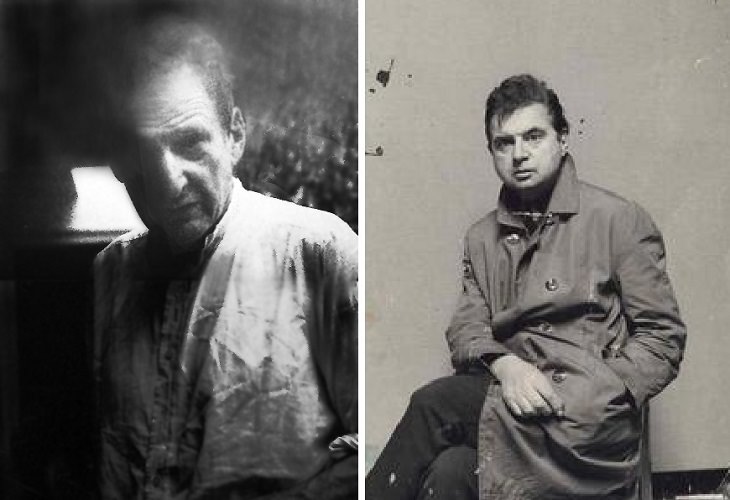
(Left: Lucien Frued, By procsilas, Wikimedia Commons / Right: Francis Bacon, By John Deakin, Wikipedia)
Freud and Bacon were another pair that got caught in the dangerous loop of mentorship and rivalry. The older artist, Bacon was on a rocketship to success, which the much younger Freud willingly caught on to. Freud soon learned why one never meets their heroes and found himself enthralled by Bacon’s confidence, artistic prowess, and penchant for gambling.
Freud, for his part, did everything he could to emulate the older artist, who, in turn, would immerse himself in the younger man’s words and perspective. Both had immense respect for each other and their work. Their competitive relationship greatly mimicked that of Van Gogh and Gauguin in terms of destructiveness.
However, their friendship was maintained for years. Much like Picasso and Matisse, they learned and grew beside each other (despite the heavy age difference) over 2 long decades. They each taught and gave each other something different, sparking a fire of creativity within which beautiful works like “Night Portrait” and “Triptych” would be born.
Did these competitive creators spark your interest? Then share this article!